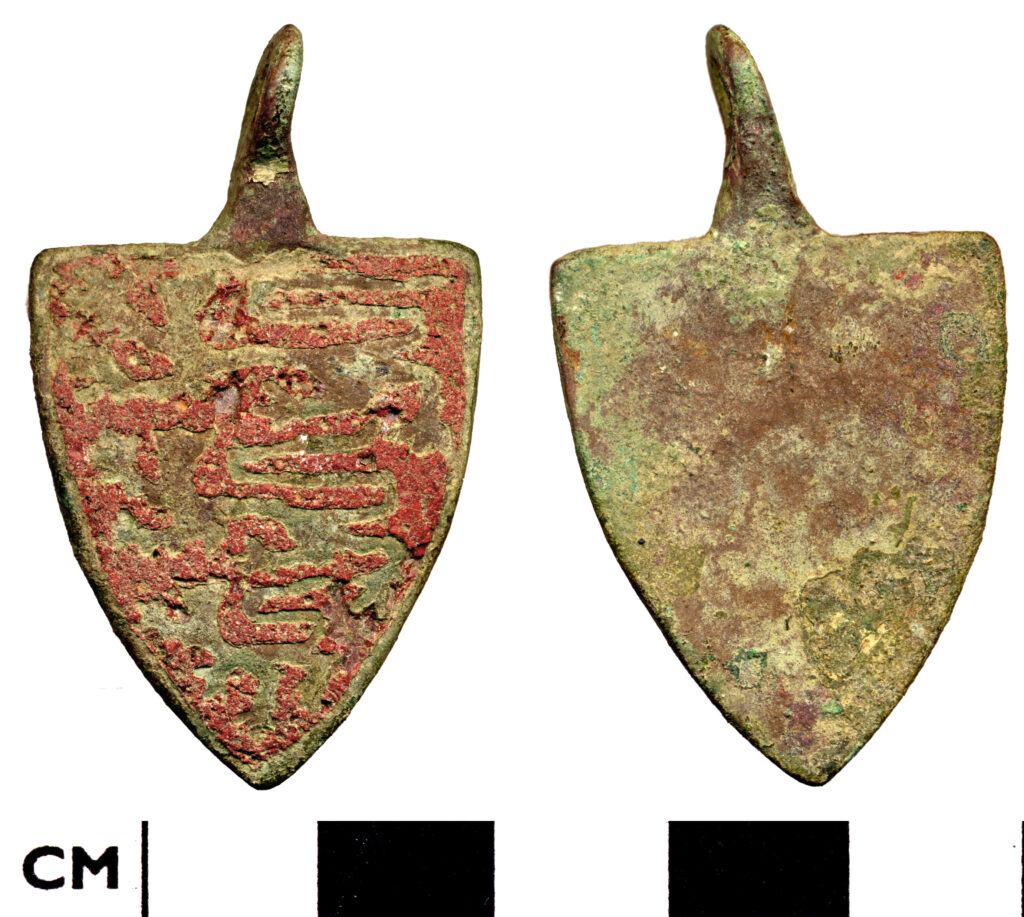In an extraordinary archaeological discovery, a valuable 800-year-old pendant featuring three golden lions has been uncovered in Warwickshire, England. This find, made during the HS2 high-speed rail initiative, offers a captivating insight into the medieval era and underscores the lasting significance of England’s iconic emblems. Announced just before the England Women’s football team’s Euro final, this artifact is rich in history and cultural importance.
The Discovery of a Priceless Artifact

Archaeologists involved in the HS2 project found the pendant in the village of Wormleighton, located approximately 50 miles southeast of Birmingham. Dating back to the 12th century, it is thought to have once decorated a horse harness. The pendant, with its shield-like “heater” shape, showcases three golden lions on a red background, echoing the familiar England football crest today. This find is not only a remarkable archaeological treasure but also a powerful symbol that resonates with England’s national identity.
The Historical Significance of the Three Lions
The lion’s role as a symbol of England has a rich history, originating with William the Conqueror, the first Norman king who ruled from 1066 to 1087. He introduced two lions on a red field as his coat of arms, a symbol he brought to England’s throne. Henry II, who reigned from 1154 to 1189, added a third lion to the design after marrying Eleanor of Aquitaine in 1152. The three lions became emblematic of the English monarchy, especially during the reign of Henry’s son, Richard I (1189-1199), and continued to symbolize the Arms of England until the rise of the Lancastrian Dynasty in 1399.
The Remarkable Condition of the Pendant

Crafted from a copper alloy, likely brass, and coated with a thin layer of gold, the pendant features three lions etched against a red background, potentially symbolizing the blood shed in battle. Remarkably well-preserved despite centuries passing, the pendant shows some weathering on the red enamel and gilding, likely from its use on a horse harness. Measuring under 2cm in width and over 4cm in height, its small size belies its considerable historical significance.
Archaeology and the HS2 Project
While the HS2 initiative has faced criticism for its effects on historic sites and natural environments, it has also opened up exceptional opportunities for archaeological discoveries throughout Britain. The location of this pendant is believed to have been an Iron Age or Romano-British settlement, adding further historical context to the find. The HS2 archaeology program has previously revealed several important artifacts, including a skeleton with a spear embedded in its back at an Anglo-Saxon burial site near Wendover, Buckinghamshire.
A Symbol of Inspiration for the Lionesses

The announcement of the pendant’s discovery came just days before the England Women’s football team, known as the Lionesses, faced Germany in the Euro final. The timing of this find has been perceived as an auspicious sign, with the iconic three lions emblem serving as motivation for the team. A representative from HS2 Ltd expressed hope that this extraordinary piece of history would inspire the Lionesses to forge their own legacy on the field.
Conclusion
The unearthing of this 800-year-old pendant in Warwickshire represents more than just an archaeological success; it connects us to England’s rich history and cultural heritage. As the HS2 project continues to reveal secrets from Britain’s past, discoveries like this pendant remind us of the deep roots that national symbols such as the three lions have in England’s narrative. As the Lionesses took to the field, this ancient artifact stood as a beacon of inspiration, linking the past and present in a powerful reflection of England’s enduring spirit.

